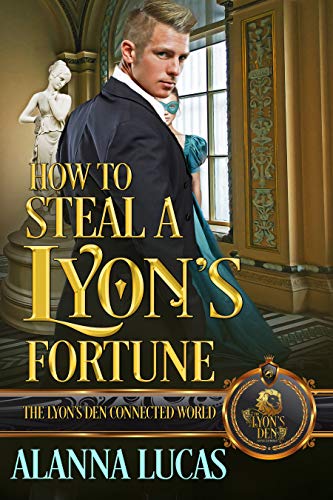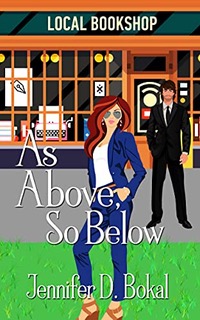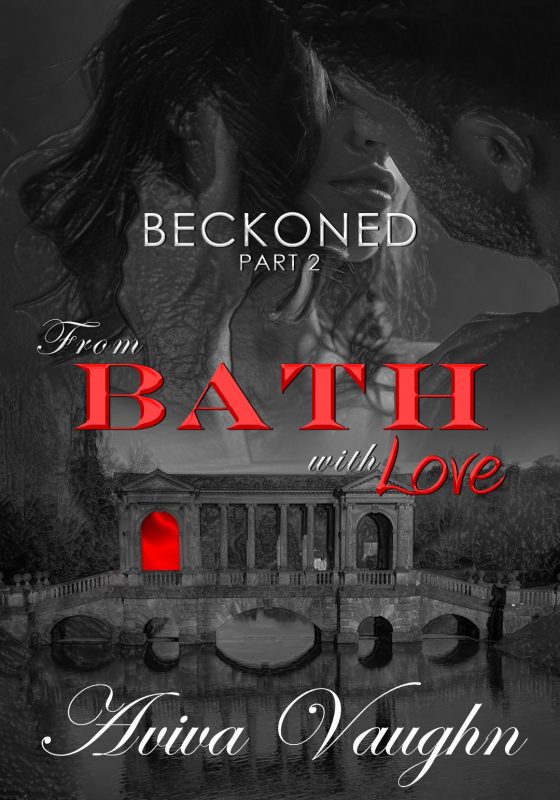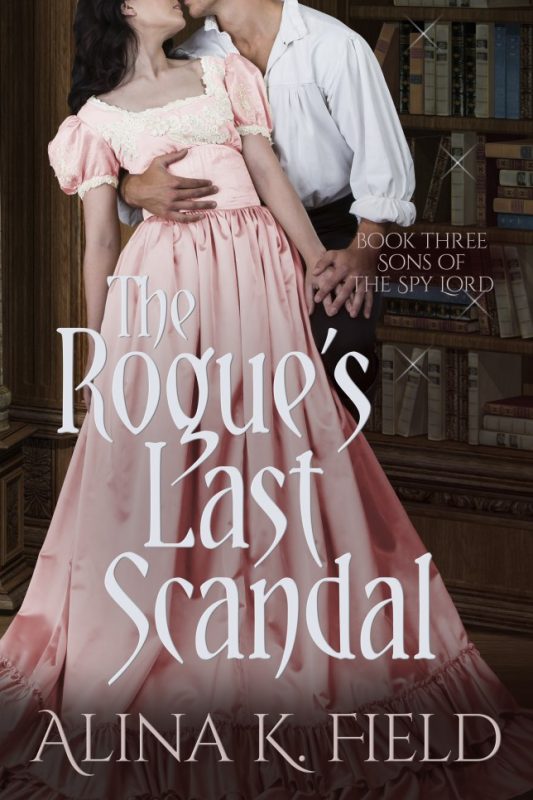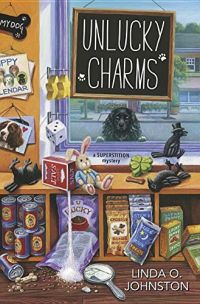First Quickie…Video Trailer
April 5, 2018 by Tracy Reed in category Pink Pad by Tracy Reed tagged as birthdays, Promo, Spring, Tracy Reed, video trailerHappy Spring! I don’t know about you, but I can’t believe the first quarter of the year is done. It’s even more shocking for me, because my birthday is in the first couple of weeks of spring. I always ask myself the same thing, “I can’t believe it’s April…why is time moving so quickly? And how am I suppose to get things done, with time moving so quickly?” Then I finish it by saying, “Yeah, thank God for another birthday.”
I’m the person that likes to do everything myself. Let me rephrase that. Being a small business owner, I’ve learned that if funds are tight and it’s not possible to hire someone, I need to do the task myself. The other side of that coin is, I need to know how to do it, so when I can afford to farm it out, I know how to effectively shop for the best person. As well as how to do it, if time doesn’t permit for outsourcing.
When I released my last book, DESPERATE DESIRE, I wanted to do a video. I studied television production in college, but that was a while back. Technology has changed greatly…for the better. Hiring a production facility to create a promotional video for me wasn’t an option for several reason: cost and time. I got this brilliant idea, a few days before release day. So I looked at what I could do.
I went to YouTube for answers. Turns out, I had a major tool at my disposal…Adobe Photoshop or Adobe Creative Cloud. Adobe Creative Cloud gives you access to every piece of software Adobe provides for $49.99 per month. I like it because it’s a month to month subscription and I don’t have to worry about buying new software. [There are a few rules to adhere to.] I simply install the updates when available. In addition to Photoshop and InDesign [is InDesign to format my print books]. They recently added TypeKit…a sea of amazing fonts. Until recently, I used Muse to create my website [the reason I changed websites is a post for another day]. The possibilities with the Adobe Creative Cloud are endless.
As I was saying. I wanted to do a video for my book. Armed with an few hours on YouTube and help from my godbrother, I was able to do my first video. I’m still learning how to do these trailers, but I’m pretty excited about my first try. I found the music on a free YouTube download and added my cover image and one from another book for the eye candy. It’s a simple process with a little learning curve. I encourage you to try it at least once.
If you have a problem viewing it, go to my Instagram page www.instragram.com/readtracyreed and view it.
See you next month.
Oh, yeah, Happy Birthday to Me.
Tracy
0 0 Read more
The Luxurious Fur Coat
April 3, 2018 by Janet Elizabeth Lynn and Will Zeilinger in category Partners in Crime by Janet Elizabeth Lynn & Will Zeilinger tagged as 1950s Fashion, hardboiled mysteries, The Skylar Drake Murder Mystery Series
My husband, Will Zeilinger and I co-write the Skylar Drake Murder Mystery series, a hardboiled series that takes the reader to 1950s Los Angeles and other areas of the west. Our new book, Slick Deal, begins News Year’s Eve 1956 at the Hollywood Roosevelt Hotel, the first murder and clues lead to Avalon, Catalina.
One of the challenges of writing a period piece is finding the right styles to dress our characters to match their personality. The rich matron, Mayme Wright, was a challenge because she was an integral part of the story. She lived in a mansion in Avalon. So I researched the beautiful fur coats I remembered ladies wearing in New York, (I was born in Queen) in the 1950s. The feel and the weight of these coats were etched in my memory.
Fur coats were glamorous and dressier than the everyday coat used by most people, i.e., the shopping, doctor appointments, etc. They were cut in the same shapes as everyday coats of the fifties. Certain furs looked better in certain styles. The box coat and swagger style looked best with thick fox, sable and seal fur. Faux furs were an option for the less affluent as well as the cheaper squirrel and marmot dyed to look like sable.
The sleeves were wide and open and collars were high and closed with a longer hair fur piece trimming the collar. To keep with the polished style of fur coats, closures were two or three buttons or clasps on the upper part of the coat. Some box styles coats had a single clasp at the neckline. Pockets were slash openings on the coat sides. The wealthy woman showcased themselves by the fur and beauty of her 1950s fur coat.
This slideshow requires JavaScript.
While most fur coats were full length or at least hip length, a few came in shorter waist length styles. The cape coat, popular in the 1940s, remained common into the 1950s. Coats like the short fur Diamond brand coat became increasingly popular in the late ’50s and ’60s when styles changed to the slim sheath dress rather than the full circle dress.
For those who could not afford a full-length coat, fur stoles, muffs and shawls were a popular alternative. Fur trim on short or long jackets also added a touch of richness without the outrageous price tag.
Mayme Wright was wearing her sable full-length coat when she went missing in Avalon.
SLICK DEAL is the fourth in the series and…yes we are still married!
Website: Janet Elizabeth Lynn
Website: Will Zeilinger
1 0 Read more
ROMANCE + MYSTERY + PARANORMAL = AUTHOR MARY CASTILLO!!
April 2, 2018 by Jann Ryan in category Jann says . . . tagged as Mary Castillo, mystery, paranormal, romance
It is no wonder that Mary Castillo is a paranormal mystery and romance author. She grew up in a haunted house.
Her mom once found her in the closet talking to the nicest lady who had a daughter and two sons. Mary was the only person in the closet and the more questions her mom asked, the plainer it was that her then three-year-old child described the previous (and deceased) resident of their house!
Mary grew up in the same town as the psychic detective of her paranormal mystery series, Dori Orihuela. She even “gave” Dori her dream home, a three-story white Edwardian mansion based on a real historic property. (And no, there are no bootleggers buried in their backyard!) Also, Mary made Dori a tough, smart robbery detective because Mary has discovered from practical experience as a former reporter that is not cop material. She likes to think that Dori is a psychic version of Wonder Woman!
With her degree in history, Mary also loves to find and share untold histories such as bootlegging women and no-nonsense World War II era nurses. Mary’s background is in marketing, public relations, and journalism, proving that yes, you can make a living as a writer! Combining her love of the paranormal with historical, Gothic fiction is a dream come true. Mary now writes the books she loves to read—chilling, psychic suspense novels with sexy heroes and courageous heroines.
However, her current home in Orange County, California is not haunted.
Jann: We’re here today with the remarkable author, Mary Castillo, to talk about haunted houses, a Mystery series and audiobooks.
Jann: What are some of the best things you have learned since your debut novel, Hot Tamara, in 2005?
Mary: The best thing I learned since Hot Tamara is how we can touch our readers’ lives. A few months after its publication, I received an email from a woman who never thought she’d laugh out loud in the chemo infusion room.  But she did thanks to reading my book! What a beautiful gift. Ever since then, she pops into my mind and inspires me to do the very best I can with each story because I never know how or when one of my books will come into someone’s life.
But she did thanks to reading my book! What a beautiful gift. Ever since then, she pops into my mind and inspires me to do the very best I can with each story because I never know how or when one of my books will come into someone’s life.
Jann: What was it like to have Cosmopolitan magazine select Hot Tamara as the Red Hot Read in April of 2005?
Mary: It was very unexpected and so exciting. The only problem was that my grandma read that issue of Cosmo first before reading the book. Her first impression of my writing was well, spicy to say the least! But she was so excited to see my lifelong dream come true. I must lay the blame on her because when I was 12 she lent me Hollywood Wives by Jackie Collins and told me that being an author would be the best job in the world. Good thing I listened to my grandma because she was right!
Jann: What was it like to grow up in a haunted house?
Mary: My parents were very open and natural about our resident spirit, so it didn’t occur to me that it was odd until I was old enough to tell my friends and either scare the heck out of them or be teased! My mom got a few concerned phone calls from parents. Honestly, our ghost was like a nosey, shut-in spinster aunt. Every now and then she’d switch the lights on and off, or open and close doors. We knew she was around when the room would turn cold and we’d just say hello and ask her not to scare us.
Jann: If your house hadn’t been haunted, do you think you would be writing the Dori O Paranormal Mystery series?
Mary: Lost in the Light is heavily inspired by the classic movie, The Ghost and Mrs. Muir (I listened to the soundtrack while writing and editing the book). I was also edging into the paranormal with little touches in In Between Men and especially, Switchcraft in which the heroines switch bodies and live each other’s lives.
Jann: Tell us about Detective Dori Oriheula and the series.
Mary: Dori first appeared in a novella I wrote with my author friends titled, Names I Call My Sister. I loved her from the start: she’s beautiful, smart, tall and can take down a grown man without messing up her hair. She’s the least likely person to be psychic and I’ve had a lot of fun watching her wrestle with accepting this fact. She’s getting there.
Jann: Dori is getting a second chance at love with Gavin Salazar. Where do you see their relationship going?
Mary: I can’t tell you or else I’ll ruin the series! But I can say this: as long as they’re together, there will be challenges. He is a laid-back, creative surfer guy who loves his little daughter. Dori is quiet, fact-driven and on the surface, isn’t cozy. While he’s open to the idea of the paranormal, Dori is very guarded which only adds to their trust issues. When I threw them together, I knew they had something if only they’d open-up to one another. It’s been fun to make their lives difficult and see them come together as a team.
Jann: You have published three books in this series, Lost In The Light, Girl In The Mist and Lost In Whispers–is there a book four coming soon?
Mary: Yes, I’m preparing the fourth book (a novella) for October 2018. It picks up right where we left off with Lost in Whispers. My mom begged me to tell her what happened to one of the main characters who was in a coma at the end of the book. I didn’t even tell her. She’ll make me pay for it, one way or another!
Jann: All three books are available on iTunes and Audible and you are the narrator. Why did you decide to do your own narration?
Mary: I really, really wanted an audiobook. But we didn’t have the budget to produce one. I have a background in drama and video production, and I’ve always had so much fun performing at book readings. In January 2016, I did some test recordings and began narrating my audiobook. I fell in love with this method of telling stories. Now that it is a finalist in the ABR Listener’s Choice Award for Mystery, I may have found a new career!
But the unexpected gift of recording Lost in the Light while I was editing Lost in Whispers, helped with continuity because I recalled details that I had forgotten! Once I finished Lost in the Light, I jumped into Girl in the Mist, which taught me that it is fun to write a steamy love scene but a bit awkward recording it! I’m now recording Lost in Whispers which I plan to release in the fall and then the fourth Dori novella to be released in Winter 2018.
Jann: Thank you Mary for letting us into your writing world. You can contact Mary at the following sites.
Website: https://marycastillo.com/
Facebook: https://www.facebook.com/marycastillo/
Twitter: https://twitter.com/MCastilloWrites/
A selection of Mary Castillo’s books are available below. Hover over the book cover for the buy links.
0 0 Read moreApril Featured Author: Tracy Reed
April 1, 2018 by marianne h donley in category Apples & Oranges by Marianne H. Donley, Featured Author of the Month tagged as April Featured Author, Featured Author of the Month, Tracy Reed
 Author: Tracy Reed
Author: Tracy Reed
A California native, novelist Tracy Reed pushes the boundaries of her Christian foundation with her sometimes racy and often fiery tales.
After years of living in the Big Apple, this self proclaimed New Yorker draws from the city’s imagination, intrigue, and inspiration to cultivate characters and plot lines who breathe life to the words on every page.
Tracy’s passion for beautiful fashion and beautiful men direct her vivid creative power towards not only novels, but short stories, poetry, and podcasts. With something for every attention span.
Tracy Reed’s ability to capture an audience is unmatched. Her body of work has been described as a host of stimulating adventures and invigorating expression.
Find Tracy on Social media:
https://www.facebook.com/readtracyreed
https://www.bookbub.com/authors/tracy-reed
https://www.instagram.com/readtracyreed/
https://twitter.com/readtracyreed
https://www.pinterest.com/readtracyreed/
Dear Extra Squeeze Team, How Do I Know When to Stop Writing?
March 31, 2018 by The Extra Squeeze in category The Extra Squeeze by The Extra Squeeze Team tagged as editing, first drafts, writing
Dear Extra Squeeze Team, How Do I Know When to Stop Writing?

Rebecca Forster
USA Today Bestselling author of 35 books, including the Witness series and the new Finn O’Brien series.
This is an interesting question because it implies that the problem is with the end of a book. If that is the case, then I have never had a problem knowing when to stop writing. Before I begin I know the end. I even know the last sentence I want to type. But when it comes to overwriting, there’s more to the story (okay, pun intended)
In the thirty plus years I have been a working novelist I still overwrite the middle of the manuscript. I intrude on my own work with asides, philosophy, research information, angst and whatever else comes into my mind in the throes of creation.
Thanks to a wise editor (our own Jenny Jensen) I have learned to recognize this problem and deal with it as follows:
1) Don’t worry about it during the first draft.
2) On your first self-edit identify and cut what you believe to be extraneous information and place this in a file in case you wish to reinsert it later.
3) Read again. Keep cutting or reinsert information with an objective eye.
4) Send to your editor who – intimately knowing the author’s propensity to overwrite the middle – will identify anything that slows the story, creates questions or bores the reader.
Overwriting is not just a function of the end of the book but of the book itself. A story always has a beginning, middle and a resolution. Do not start writing before you know what that resolution is because it gives you a point on your literary horizon. That is where you must stop. The problem for me is that getting to that point is sometimes messy. Instead of writing that straight line from A-B, I zig-zag and overwrite.
P.S. In the years since I adopted the cut and save file I have never once gone back and used anything, but it sure makes me feel better to know it exists.
[tweetshare tweet=”Dear Extra Squeeze Team, How Do I Know When to Stop Writing?” username=”A_Slice of Orange”]

Jenny Jensen
Developmental editor who has worked for twenty plus years with new and established authors of both fiction and non-fiction, traditional and indie.
When the story is told. The rest is editing.
The goal is to tell the story that lives in your head. Keep writing until you get it all out and down on paper (or pixels). Length doesn’t matter at this point; it’s the story that counts. Once you type ‘The End’ and find yourself with 40,000 words you may have a novella. If the tally is between 80 and 90,000 it meets the average length for a novel in most genres. When the word count tips to 120,000 + you may have an epic (Sci Fi and Fantasy are often longer) or the need to lose 20 – 40,000 words. You’re now at the stage of the brutal self-edit.
There are no rules for how long a novel should be, but readers do have some expectations. Given those expectations of length the choice is yours as to which literary format you want. Regardless of bulk all successful fiction shares one characteristic: good structure with clean flow. A successful novel has a beginning where the characters and the problems are introduced, a middle where the characters evolve and the problems are dealt with, and an end with confrontation and resolution. That path is smooth and enjoyable for the reader because the flow is good – it carries the reader along seamlessly.
Overwriting is usually the cause of a too long word count and the cause of disjointed story flow. It’s all right – we all do it. You had to get it all down on the page. Now it’s time for some honest self-editing.
Dialog tags are a common cause of overwriting.
“Don’t,” she said with a fierce glint flashing in her eyes. Eleven words that flow so much better as three: “Don’t,” she hissed.
Too many words dampen the impact.
Do you have descriptive passages meant for mood and setting that are so elaborate they distract from the action? Cut, tighten and move the story along. Do you find you’ve written back-stories and sidebars meant to enlarge on character or setting but are actually an unnecessary detour? If you’ve got your heroine on a dark country road when her tire blows and then she falls into memories of a frightening slumber party from her past you’ve broken the flow of the tension for something that doesn’t add to the story. Delete it. (Oh I know, it’s hard to kill your children but you can always copy it into a file marked for future use.)
Read your work with an editor’s eyes. Every word, every scene must help carry the story along; it must add to the plot, build the tension, build on a character. Make certain your words all carry the necessary function for the story to flow so smoothly that the reader can’t look away. If you don’t get an editor, get a strong beta reader to help you peel away the extraneous dross. Once that’s been done correctly, what you have is the best your story can be.
Robin Blakely
PR/Business Development coach for writers and artists; CEO, Creative Center of America; member, Forbes Coaches Council.

When to stop writing—is that just when completing one book or…forever?!
With one book, I don’t think it’s a problem for most writers because they tend to construct their books out of order, and the end is often completed long before the middle. For me it is, anyway! From there, it is just a case of connecting the dots and making sure there aren’t any incomplete subplots or character resolutions. If your book is overshooting 300,000 words and you’re not writing epic fantasy, however, then it’s probably time to stop!
Ever wonder what industry professionals think about the issues that can really impact our careers? Each month The Extra Squeeze features a fresh topic related to books and publishing.
Amazon mover and shaker Rebecca Forster and her handpicked team of book professionals offer frank responses from the POV of each of their specialties — Writing, Editing, PR/Biz Development, and Cover Design.
Do you have a writing or publishing question?
Send them to the Extra Squeeze Team!

Affiliate Links
A Slice of Orange is an affiliate with some of the booksellers listed on this website, including Barnes & Nobel, Books A Million, iBooks, Kobo, and Smashwords. This means A Slice of Orange may earn a small advertising fee from sales made through the links used on this website. There are reminders of these affiliate links on the pages for individual books.
Search A Slice of Orange
Find a Column
Archives
Featured Books
HOW TO STEAL A LYON’S FORTUNE
When it comes to stealing a Lyon's fortune, it takes two to right a wrong.
More info →BECKONED, PART 2: FROM BATH WITH LOVE
Can fire and ice both survive?
More info →Newsletter
Contributing Authors
Search A Slice of Orange
Find a Column
Archives
Authors in the Bookstore
- A. E. Decker
- A. J. Scudiere
- A.J. Sidransky
- Abby Collette
- Alanna Lucus
- Albert Marrin
- Alice Duncan
- Alina K. Field
- Alison Green Myers
- Andi Lawrencovna
- Andrew C Raiford
- Angela Pryce
- Aviva Vaughn
- Barbara Ankrum
- Bethlehem Writers Group, LLC
- Carol L. Wright
- Celeste Barclay
- Christina Alexandra
- Christopher D. Ochs
- Claire Davon
- Claire Naden
- Courtnee Turner Hoyle
- Courtney Annicchiarico
- D. Lieber
- Daniel V. Meier Jr.
- Debra Dixon
- Debra H. Goldstein
- Debra Holland
- Dee Ann Palmer
- Denise M. Colby
- Diane Benefiel
- Diane Sismour
- Dianna Sinovic
- DT Krippene
- E.B. Dawson
- Emilie Dallaire
- Emily Brightwell
- Emily PW Murphy
- Fae Rowen
- Faith L. Justice
- Frances Amati
- Geralyn Corcillo
- Glynnis Campbell
- Greg Jolley
- H. O. Charles
- Jaclyn Roché
- Jacqueline Diamond
- Janet Lynn and Will Zeilinger
- Jeff Baird
- Jenna Barwin
- Jenne Kern
- Jennifer D. Bokal
- Jennifer Lyon
- Jerome W. McFadden
- Jill Piscitello
- Jina Bacarr
- Jo A. Hiestand
- Jodi Bogert
- Jolina Petersheim
- Jonathan Maberry
- Joy Allyson
- Judy Duarte
- Justin Murphy
- Justine Davis
- Kat Martin
- Kidd Wadsworth
- Kitty Bucholtz
- Kristy Tate
- Larry Deibert
- Larry Hamilton
- Laura Drake
- Laurie Stevens
- Leslie Knowles
- Li-Ying Lundquist
- Linda Carroll-Bradd
- Linda Lappin
- Linda McLaughlin
- Linda O. Johnston
- Lisa Preston
- Lolo Paige
- Loran Holt
- Lyssa Kay Adams
- Madeline Ash
- Margarita Engle
- Marguerite Quantaine
- Marianne H. Donley
- Mary Castillo
- Maureen Klovers
- Megan Haskell
- Melanie Waterbury
- Melissa Chambers
- Melodie Winawer
- Meriam Wilhelm
- Mikel J. Wilson
- Mindy Neff
- Monica McCabe
- Nancy Brashear
- Neetu Malik
- Nikki Prince
- Once Upon Anthologies
- Paula Gail Benson
- Penny Reid
- Peter Barbour
- Priscilla Oliveras
- R. H. Kohno
- Rachel Hailey
- Ralph Hieb
- Ramcy Diek
- Ransom Stephens
- Rebecca Forster
- Renae Wrich
- Roxy Matthews
- Ryder Hunte Clancy
- Sally Paradysz
- Simone de Muñoz
- Sophie Barnes
- Susan Squires
- T. D. Fox
- Tara C. Allred
- Tara Lain
- Tari Lynn Jewett
- Terri Osburn
- Tracy Reed
- Vera Jane Cook
- Vicki Crum
- Writing Something Romantic
Affiliate Links
A Slice of Orange is an affiliate with some of the booksellers listed on this website, including Barnes & Nobel, Books A Million, iBooks, Kobo, and Smashwords. This means A Slice of Orange may earn a small advertising fee from sales made through the links used on this website. There are reminders of these affiliate links on the pages for individual books.






































